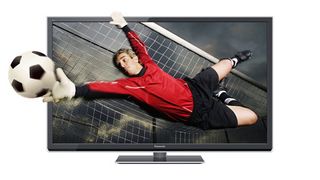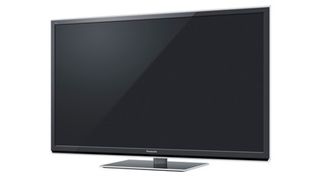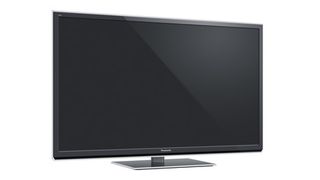Why you can trust TechRadar
While Panasonic's claims of a radical overhaul of its panel design for the P50ST50 inevitably raised hopes of some level of picture quality improvement, the results surpass even our most optimistic expectations.
Particularly dazzling is the set's contrast range. At the same time as clearly boosting - by some margin - the Panasonic P50ST50's brightness vs last year's equivalent models, Panasonic has also managed to greatly improve the depth, naturalism and richness of its black level performance. So much so that its black level response looks at least the equal of last year's flagship Panasonic VT30 plasma TVs.
Film fans in particular will - or should - find this stellar contrast performance enough in itself to lure them away from almost all LCD rivals, which leave the dark scenes found at some point in almost all films looking decidedly grey by comparison.
While on the subject of plasma vs LCD black level comparisons, the Panasonic P50ST50 also demands credit for the gorgeous uniformity of its black response. Where many (indeed, most) LCD TVs suffer patches of clouding - where the screen's brightness during dark scenes seems higher in some parts of the picture than it does in others - the Panasonic P50ST50's blackness is equally profound from one corner to the other.

This contrast range and black level uniformity both make it far easier for you to become totally lost in what you're watching.
The fact that each plasma pixel in the picture produces its own individual illumination, meanwhile, means there's much more shadow detail in play during dark scenes than you get with pretty much any LCD television, helping dark scenes look as detailed and textured as bright ones.
The same self-emissive properties further make it possible for an extremely bright pixel to sit right alongside a very dark one in the same frame, so there's no need to average out the light like you have to with LCD TVs, to some extent.
To put all this in less technical terms, the Panasonic P50ST50's dazzling contrast performance helps it deliver arguably the most cinematic pictures we've seen from such an affordable TV.

Not that contrast is the set's only strength. It also does a great job reproducing motion, easily avoiding the blurring problem LCD has to work so hard to counter, and also suffering way less with judder than previous Panasonic TVs have tended to do.
This is even the case if you don't employ Panasonic's Intelligent Frame Creation (IFC) processing - but feel free to give this processing a whirl, because at its lower power levels, at least, it proves unusually clever at reducing motion artefacts even further without generating lots of unpleasant side effects.
More good news finds HD pictures looking terrifically crisp and clean, as the screen maps 1080p feeds immaculately to its native Full HD pixel count at the same time as its image processing serves up some of the subtlest colour blends ever seen from a mid-range plasma.
In fact, as little as two or three years ago the level of noise-free clarity now available on the Panasonic P50ST50 would have only been seen on Panasonic's vastly more expensive professional-grade TVs.

Standard definition feeds are upscaled to the 50-inch Full HD screen impressively well for a mid-range TV. You'll probably find a little more precision and a little less noise if you step up to one of Panasonic's GT50 or VT50 models, thanks to those having more powerful dual-core processors. But the Panasonic P50ST50's standard definition efforts are nonetheless excellent for its price level.
3D picture
The Panasonic P50ST50's 3D pictures are enticing too. They look exceptionally well detailed for a start, delivering fully on the active 3D format's talents where HD rendering is concerned.
They're also considerably brighter and more colourful than those of last year's 3D plasmas, helping you enjoy a more palpable sense of depth - especially during dark scenes. There's a touch of judder around still, especially during camera pans, but this too is reduced from last year's plasmas.
Surprisingly there is a touch of crosstalk noise over distant objects; something we wouldn't have expected, given plasma's track record in this department. This is possibly down to the extra brightness Panasonic has brought to the 3D party, or maybe it's just more noticeable because one or two rival LCD screens recently have got so good at suppressing the ghosting problem.
In any event, though, the Panasonic P50ST50's crosstalk is not at all overpowering, and so shouldn't be considered any kind of deal breaker, even if you're one of the handful of dedicated 3D fans out there.

If the Panasonic P50ST50 has a genuine weakness, it's that its images aren't as vibrant and bright as those of a typical LCD TV - even despite Panasonic's recent brightness-boosting efforts. In a relatively dark environment, this isn't a problem at all; on the contrary, the pros of Panasonic's contrast-over-brightness focus pay are abundantly obvious in a low-light environment.
But if you have a very bright living room, especially one with lots of direct sunlight flooding in, then the Panasonic P50ST50's pictures might look a little dull at times, even using the set's most dynamic picture preset.
Another minor Panasonic P50ST50 flaw finds fizzing noise appearing over skin tones from time to time if somebody is moving across the screen. We only noticed this on a handful of occasions during the days we lived with the TV, though, and even when it appears it's only for the briefest of instants.
AV Technology Contributor
John has been writing about home entertainment technology for more than two decades - an especially impressive feat considering he still claims to only be 35 years old (yeah, right). In that time he’s reviewed hundreds if not thousands of TVs, projectors and speakers, and spent frankly far too long sitting by himself in a dark room.


